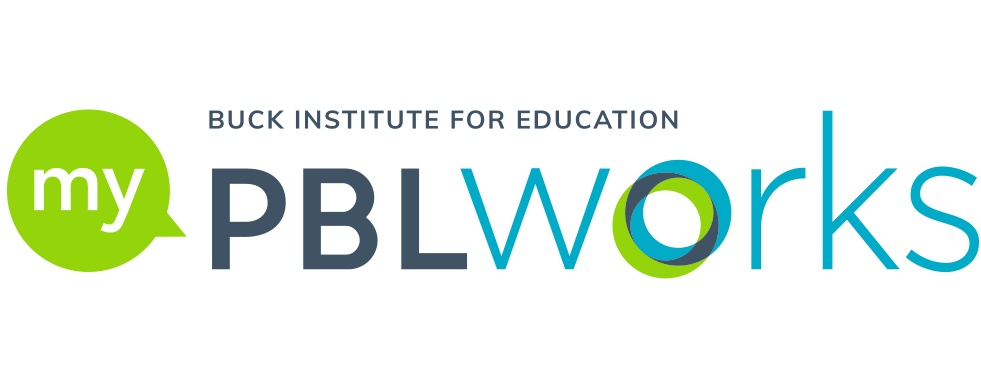The Perils of PBL's Popularity
 As readers of this blog well know, Project Based Learning is a hot topic in education these days. The progressive teaching method is being touted as one of the best ways to engage 21st-century students and develop a deeper understanding of content as well as build success skills such as critical thinking/problem-solving, collaboration, communication, and self-management.
As readers of this blog well know, Project Based Learning is a hot topic in education these days. The progressive teaching method is being touted as one of the best ways to engage 21st-century students and develop a deeper understanding of content as well as build success skills such as critical thinking/problem-solving, collaboration, communication, and self-management.
At the Buck Institute for Education, we think PBL is even more than that; it can be absolutely transformative for students who experience enough high-quality PBL in their K-12 years. They gain not only understanding and success skills but also confidence in their ability as independent learners and a greater sense of their own efficacy and power.
PBL is transformative for teachers and schools, too, as they create real-world connections to learning, change school culture, and guide students to successfully complete high-quality projects. And teachers who use PBL regularly can experience “the joy of teaching,” which they may not – make that likely will not – in a test-prep, drill-and-kill environment.
You’ll notice I use the term “high-quality” twice in the above, which points to a real concern we have at BIE. We don’t want PBL to become yesterday’s news, another education fad for which much is promised and little delivered. This is why BIE developed and promotes the Gold Standard PBL model: to help ensure PBL’s place as a permanent, regular feature of 21st century education for all students.
If it’s not done well, I see PBL facing three dangers:
1. Unprepared Teachers & Lack of Support
Teachers who are not prepared to design and implement projects effectively will see lackluster student performance and face daunting classroom management challenges. Shifting from traditional practice to PBL is not a simple matter of adding another tool to a teacher’s toolbox. PBL is not just another way to “cover standards” that’s a little more engaging for students. PBL represents a different philosophy about what and how students should learn in school, and many teachers and school leaders do not yet realize its implications. It was born in the progressive education movement associated with John Dewey, with more recent ties to constructivism and the work of Jean Piaget. Adding to this situation is the fact that most teachers teach the way they were taught, and did not experience PBL when they were students – so they don’t have a vision for what it can be.
Schools and districts need to provide teachers with opportunites for extensive and ongoing professional development, from workshops provided by experts (like BIE’s) to follow-up coaching, to work in their professional learning communities. Policies around grading, pacing guides, benchmark assessments, and more will need to be re-examined. It also means having longer class periods or blocks of time for project work, and rearranging how students are assigned to classrooms to allow for shared students for secondary-level multi-subject projects. And – I can’t stress this enough – teachers will need LOTS of time to plan projects and reflect on their practice. This means changing school schedules to create collaborative planning time, re-purposing staff meetings, perhaps providing (paid) time in the summer, and finding other creative solutions. All of this is a tall order, I realize, but these are the kinds of changes it will take for PBL to stick.
2. PBL-Lite
Many teachers and schools will create (or purchase from commercial vendors) lessons or activities that are called “project-based” and think they’re checking the box that says “we do PBL” – but find little change in student engagement or achievement, and certainly not a transformation. I’ve been seeing curriculum materials offered online and in catalogs that tout “inquiry” and “hands-on learning” that, while better than many traditional materials, are not really authentic and do not go very deep; they do not have the power of Gold Standard PBL. (For example, I've seen social studies "projects" from publishers that have kids writing pretend letters to government officials - instead of actually taking action to address a real-world issue - and math "projects" where students go through a set of worksheets to imagine themselves running a small business, instead of actually creating a business or at least an authentic proposal for one.)
With materials that are PBL-lite, we might see some gains in student engagement, and perhaps to some extent deeper learning; many of these materials are in fact better than the traditional alternatives for teaching the content. But the effects will be limited.
3. PBL Only for Special Occasions or Some Students
PBL might be relegated to special niches, instead of being used as a primary vehicle for teaching the curriculum - or being provided equitably for all students. I’ve heard about really cool projects that were done in “genius hours” or “maker spaces” or Gifted and Talented programs, or by A.P. students in May after the exams are over… but most students in the “regular program” did not experience PBL. Or schools might do powerful school-wide projects that do involve all students once a year or so, but the teaching of traditional academic subject matter remains unchanged. If this happens, the promise of PBL to build deeper understanding, build 21st century success skills, and transform the lives of all students, especially those furthest from educational opportunity, will remain unfulfilled.
Do you have questions or comments about the challenges of implementing PBL well? Please enter them below.
To view or download this resource, log in here.
Login